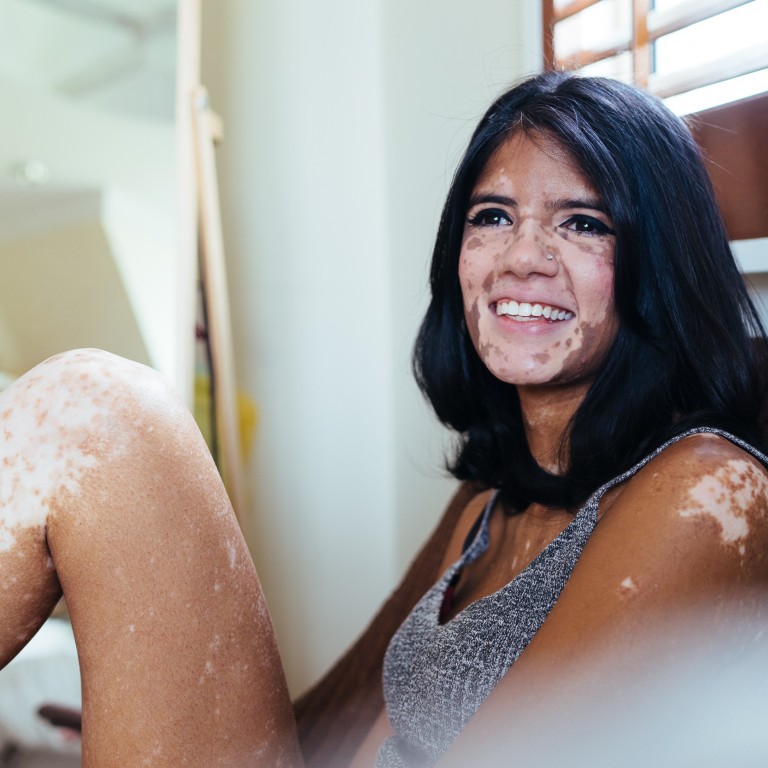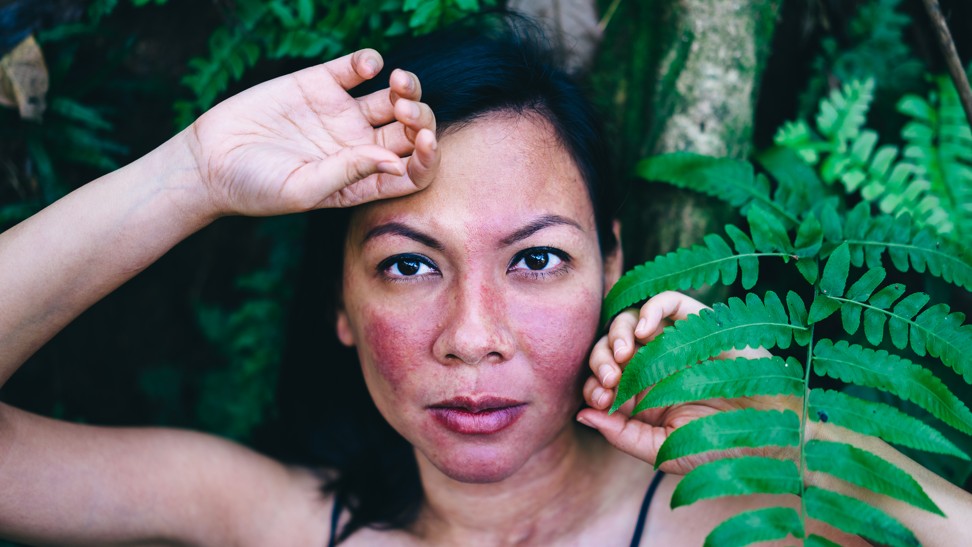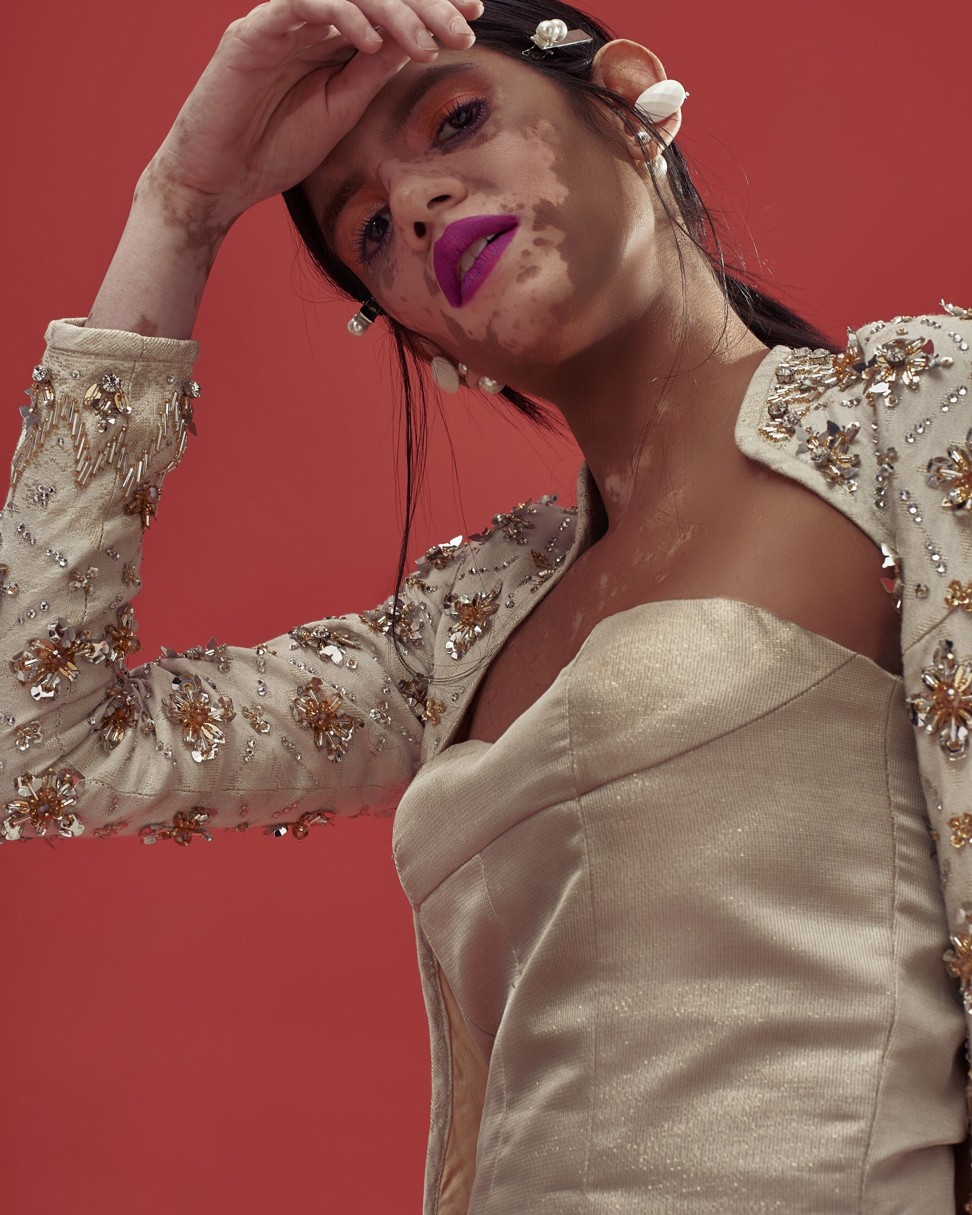
The Malaysians challenging beauty conventions and empowering everyone to celebrate their differences
- Inspiring Instagram account True Complexion is dedicated to people who live with differences
- Project shares the photographs of people who live with disabilities, medical conditions, mental health issues and body image issues
In the beauty industry, every little jar promises to fix a skin problem.
But in recent years, a few faces have challenged this concept of beauty. One of them is Canadian model Winnie Harlow, who was featured on the cover of Harper’s Bazaar Taiwan earlier this year.
Harlow has vitiligo, a skin condition where uneven pigmentation arises from a lack of melanin. Her success in the fashion industry has inspired people around the world.

Based in Kuala Lumpur, Sonya Danita Charles is an up-and-coming model who cites Harlow as one of her icons. “She’s out there doing her own thing, not caring that she has several different [skin] colours. She’s confident in herself,” says the 26-year-old, who shares Harlow’s condition of vitiligo. “She’s changing the beauty industry.”
Charles was diagnosed with vitiligo at the age of eight, and the condition developed more rapidly in her preteen years. At first, she took prescribed medication to even out her skin tone. But when she and her family found out that the medicine contained steroids, she stopped.
“My face was constantly changing,” says Charles. For years, she suffered from depression and a sense of inhibition from appearing so visibly different to her peers.
However, a few years spent studying in the United States gave Charles a new perspective. She started to grow more accepting of her condition and when she moved back to Malaysia, she was determined not to “go back into hiding”.
Charles started sharing more photos of herself on social media. “I realised I had to be vulnerable to help other people as well. I wanted people to see what was raw, I didn’t want to fabricate it,” she says.
Why Hong Kong’s beauty industry needs to be more inclusive of diversity
These days, she’s seen in editorial magazine spreads and as the face of brand campaigns. Charles has also shared her story on True Complexion, an Instagram feed dedicated to people who live with differences.
The Malaysian project shares the photographs and stories of people who live with disabilities, medical conditions, mental health issues and body image issues.
The project was created by Rozella Mahjhrin, a musician who had faced her own share of skin-based stigma.

Because of a birthmark on her face, Mahjhrin grew up feeling self-conscious and struggled with depression because of her visibly different skin.
“As a young child, when you get told over and over again that you're ugly, you don't fit in, you're unlovable, you're not worthy, you're incapable of doing certain things because you don't look the part – you believe it. It really took a toll on me and affected my self-confidence.”
Mahjhrin started True Complexion as a way to show how different people lived with the conditions that set them apart. The Instagram account features a diverse range of people, and probes ideas of self-identity.

“I want to empower a community that is often unseen and unheard,” says Mahjhrin. The platform, which is run with the help of her friends, is challenging conventional ideas of beauty.
As a musician who performs on stage and who needs to promote herself in the media, Mahjhrin has grown more comfortable with letting her birthmark remain visible. When she uses make-up, she approaches it playfully and artistically.
“On most days, my face is absolutely bare. But when I feel like dressing up a little more, I do my eyes, lips and sometimes use a very thin layer of foundation, which still keeps my birthmark visible.”
Mahjhrin likes to use gentle skincare products – the First Aid Beauty brand is a current favourite – and sunscreen while also paying attention to exercise and diet. Because of the tropical Malaysian weather, she prefers water-based moisturisers.
For Charles, her skincare and beauty routine is simple: cleansing, toning and moisturising. She uses Laura Mercier translucent powder and a little bit of concealer for acne. “I’m a lipstick person. I like Mac’s lipsticks, they have really fun colours. It’s my way of accessorising; put on a bright shade and I’m good to go,” she says.
Charles jokes that make-up assistants in cosmetic stores tend to be puzzled by her: she only uses concealer for the lighter parts of her face, whereas the store salespeople always assume she needs a dark concealer.
Five Asian skincare brands promoting clean beauty for a new generation of aware customers
As for foundation, Charles avoids it. “When I was young, my parents told me I had the option of using make-up to cover up my skin, but I knew if I covered myself, I’d have to do it every day. I wasn’t ready to commit to that.”
The beauty industry is slowly waking up to more diversity in its products and campaigns. In 2018, the model Amy Deanna, who also has vitiligo, was chosen as the face of a campaign by CoverGirl.
When Rihanna launched her Fenty beauty line, the commercial was hailed for its inclusivity. It featured women of different skin tones, which itself is still rare in an industry where darker skinned women contend with a lack of beauty options.
Charles walked the Kuala Lumpur Fashion Week runway in 2018. Although she’s glad to see the media has shifted its perceptions of beauty, she feels that the changes are slow to be seen in Asia.

However, thanks to platforms like True Complexion, people with visible skin differences don’t need to wait for the acknowledgement of global beauty brands to feel seen.
“I always thought my birthmark was a curse and it took me a very long time to finally realise that it's actually my superpower,” says Mahjhrin.
“If people are going to stare at me and talk about me, I might as well control the narrative and give them something good to look at and talk about instead.”

